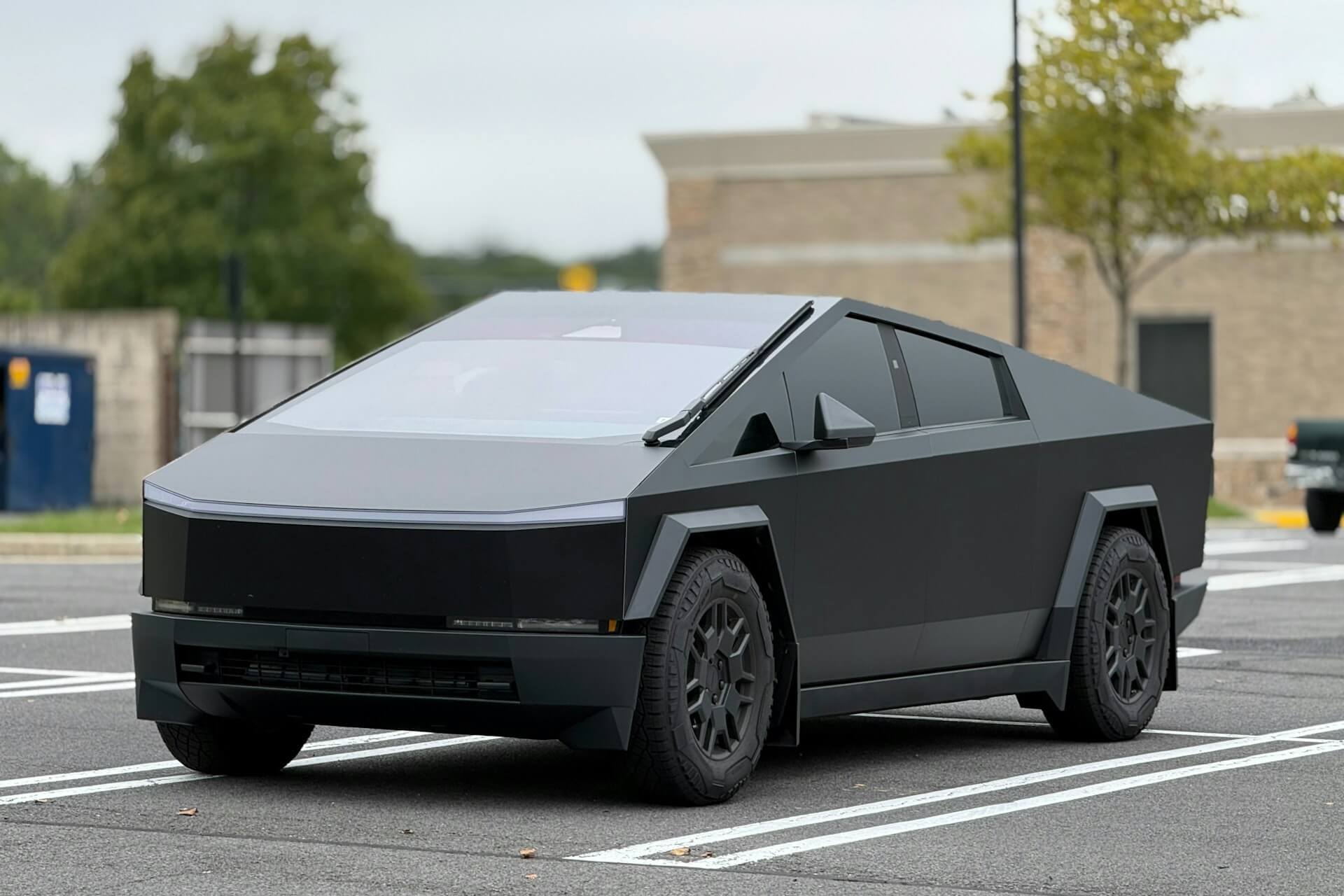
As an Amazon Associate, Modded gets commissions for purchases made through links in this post.
Featured image: The Irvine Police Cybertruck (UP.FIT)
Law enforcement is integral to emergency response and public safety, so they need a sizable budget to get things done. However, controversy arose in Irvine, California, when the police department bought a cybertruck. Why are these California residents upset about the purchase? Here’s what you need to know.
Why Did Irvine Police Buy a Cybertruck?

In early October, the Irvine Police Department announced its acquisition of a Cybertruck and claimed to be the first law enforcement group to use the vehicle. The department said its Tesla truck will support the Drug Abuse Resistance Education (DARE) program. Irvine Police won’t use it as a patrol vehicle, although they’ll use the Cybertruck for emergency response and community assistance when necessary.
“IPD passionately seeks unique and innovative ways to connect with our community and the youth of Irvine,” the department said in a press release. “Officers on horseback, working with a support K9, or driving a unique vehicle such as the Cybertruck start positive conversations and promote community interaction.”
Why Are California Residents Angry With the Police Department?
While Irvine Police may have good intentions with the Cybertruck, residents aren’t happy with the decision. What has upset them? Here are four concerns.
1. Expense
First, people have expressed outrage over the costs. An Irvine Watchdog investigation revealed the police department spent over $153,000 on the Cybertruck, much more than usual. The Cybertruck started at a $99,990 price tag, but the upgrades made it more costly. Adding the foundation series and other aftermarket adjustments significantly increased the price.
When the price tag is that high, residents start asking questions. For instance, they may wonder why such a high cost was necessary for the vehicle — especially one that has already introduced controversy on the streets. Could the money be used elsewhere, such as other emergency services or for educational needs?
2. Usage
Irvine residents also worry about how the police will use the Cybertruck. The press release says the department will primarily use it for the DARE program. However, the vehicle can respond to emergencies if necessary. How much money is appropriate to spend on a mainly non-emergency vehicle?
Look to an Alabama police department for an example. The city of Mobile approved $1.9 million for 49 Ford F-150 Responder trucks, averaging about $39,000 per vehicle. This cost makes sense for cars you actually use for daily police duties. However, it isn’t as sensible for display equipment.
3. Emergency Response

Imagine you’re a police officer patrolling the city at night when you see somebody speeding by at 100 mph and causing chaos. This speed is double the limit, so you must turn the lights on and chase down the driver. However, you’re in an electric pickup truck, so high speeds severely limit your range.
This California police department says it can do emergency response if necessary, although it would be more challenging. Even with the upgrades, the Cybertruck isn’t as nimble as the Ford Explorer or other traditional cop cars. Now, conventional police tasks become much more complicated because of the Cybertruck.
4. Rivian

The Cybertruck is a product of Tesla, a company with engineering headquarters in Palo Alto, California. Supporting the state’s automakers is essential for familiarity, although there are options closer to home. For instance, Rivian’s headquarters are in Irvine, making residents wonder why police chose the Cybertruck over Rivian vehicles.
While also expensive, the Rivian R1T could make sense for police cars. This pickup truck can withstand temperatures up to 130 degrees Fahrenheit, which is helpful for Irvine summers. There is no indication that Rivian would have accommodated the department. However, doing so would support the local residents who work with the company.
How Could the Cybertruck Be a Liability to Irvine Police?
The Cybertruck is an alienating vehicle because of its appearance and the stigmas surrounding Tesla. However, it could simply be a liability for police departments. Here are four reasons Irvine Police may regret the Cybertruck.
1. Reliability
First, consider the Cybertruck’s reliability or lack thereof. Tesla has already recalled all 12,000 vehicles multiple times for varying reasons. In 2024, the EV manufacturer said the windshield wiper and plastic trim in the bed were defective, causing significant problems for drivers. Plus, there were a few more last year.
Once the Cybertruck debuted, it encountered multiple recalls in its first year. These mechanical issues included faulty accelerator pads, electrical systems and windshield wiper motors. Police officers must be safe when responding to calls, so these recalls are significant and concerning.
2. Maintenance Costs
The police Cybertruck cost the department over $150,000, a concern for residents. That said, the vehicle could cost even more over its life span because of maintenance costs. Electric vehicles (EVs) require less maintenance with fewer moving parts, although they can become costly if you void the warranty.
Voiding Tesla warranties is easier than you think. For instance, Tesla says it doesn’t cover damage from theft, vandalism, fire, earthquakes, off-road driving or objects striking the vehicle. California gets around two or three earthquakes annually, so this section should concern the police department.

3. Charging Time
With gas-powered cop cars, you can simply fuel them up and return to the road. However, the Irvine Police Department will have to wait a while before fully recharging the Cybertruck. The vehicle benefits from Tesla’s direct current (DC) fast charging system, but it still takes much longer than a typical fuel station.
EV charging time is a tiny but relevant factor for law enforcement vehicles. While this Cybertruck isn’t supposed to be used for emergency response, this ability disappears entirely if the battery dies. Police officers can employ battery preservation tactics, but the Cybertruck has difficulty matching up with other vehicles.
4. Road Accessibility
The Cybertruck’s bulkiness makes navigating roads more challenging, especially within the city. When examining the laws of the City of Irvine, it appears that Cybertruck could violate its own municipal code. For instance, local ordinances say vehicles over 6,000 pounds cannot enter Newport Coast Drive to Culver.
While there are exceptions for emergency vehicles, these roads are still not conducive to the Cybertruck. The warranty is again an issue when considering the Orange County roads. If the Cybertruck incurs damage from a pothole, Tesla might not cover the repair. Therefore, local officials must be even more cognizant of road conditions.
Irvine Police and Its Alienating Cybertruck Decision
Public safety decisions should include comprehensive planning and public input. In this instance, a California police department didn’t seem to include the voices of Irvine residents. The purchase has alienated the people who question how much money the department spent and what it’ll use the Cybertruck for.






